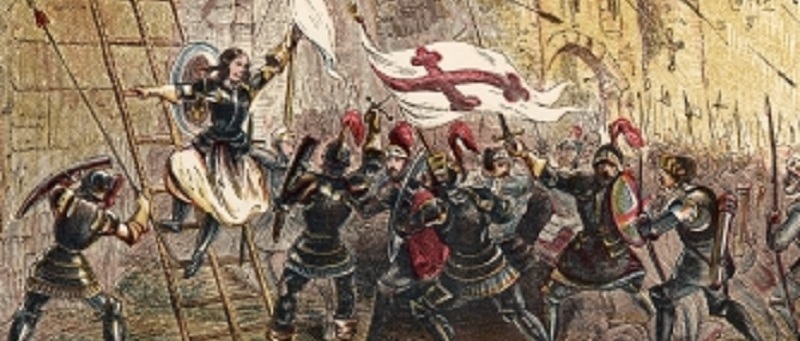The Siege of Orleans
Posted on 10th January 2021
The Siege of Orleans was an important campaign in the Hundred Years War. The English had already enjoyed great success and now controlled much of northern France. The city of Orleans was seen as the next step to conquering France as it was the northern most city that remained loyal to the French crown, therefore controlling Orleans would open up access into central France; It would however be the turning point of English fortunes.
A council of war took place in the spring of 1428. England regent John, Duke of Bedford wanted to march to the west and lay siege to the city of Angers in western France, however following the arrival of Thomas Montacute, Earl of Salisbury, a decision was made to lay siege to Orleans instead.
Salisbury headed to Orleans seizing land, towns and villages as he went. When he finally reached Orleans, he completely surrounded it.
The French defences at Orleans were led by Jean de Dunois; having seen Salisbury’s advance, he prepared Orleans well for the arrival of Salisbury.
The siege of Orleans started on 12 October 1428. The English tried many times to breach the city walls but they were constantly thwarted by the French. In one of these onslaughts Salisbury was injured and he died about a week later on 3 November 1428.
Following Salisbury’s death, William de la Pole, Duke of Suffolk was sent to take charge, but his inactivity over the next few months led to the Duke of Bedford sending John Talbot, Earl of Shrewsbury to take command.
In January 1429, the Dauphin Charles assembled a relief force at the city of Blois. The French led by Charles de Bourbon, Count of Clermont attacked the English supply lines, leading to the Battle of the Herrings on 12 February 1429.
The English had sent a supply convoy from Paris commanded by Sir John Fastolf, to the troops at Orleans. Clermont diverted his army to intercept the English forces, however he was overwhelmed by the English who then triumphantly brought their supplies to the English soldiers at Orleans.
The English had not managed to completely secure the city and some supplies were still getting into Orleans however the situation was still worsening and supplies were running low.
Jean de Dunois offered to turn Orleans over to the Duke of Burgundy, to neutrally hold for his half-brother Charles, Duke of Orleans, but when asking, this was refused by the English regent John, Duke of Bedford, leading to Burgundian forces supporting the English, deserting the siege.
At the same time of the Battle of the Herrings, French peasant woman Joan of Arc was meeting with Robert Baudricourt, garrison captain at Vaucouleurs, to convince him to take her to meet Dauphin Charles at Chinon. She had previously met with him in 1428, but been turned away. Joan claimed she had visions that she must save France from the English and take Dauphin Charles to be crowned at Reims. This time Baudricourt agreed and they left for Chinon on 23 February 1429.
Charles although sceptical at first, finally gave her a small army and on 27 April 1420 she set out for Orleans.
Joan joined a relief convoy at Blois, bringing supplies to Orleans, and they arrived on 29 April. Following this Joan spent many days handing out food to the people of Orleans; she also sent messages to the English demanding they leave, but this was unsuccessful.
Jean de Dunois managed to leave the city on 1 May to arrange reinforcements while Joan stayed in Orleans. The reinforcements, with Joan and her army attacked the English forces, taking control of the south bank of the Loire river, with the English suffering heavy losses. The final assault took place on 7 May 1429. This made it easy for the French to re-supply Orleans and gave little reason for the English to continue the siege.
On the morning of 8 May, English forces were assembled face to face with the French, but instead of attacking, the English retreated and the Siege of Orleans was over.
The Siege had started on 12 October 1428, and no resolution had been made. Joan of Arc arrived on 29 April 1429 and the siege was over nine days later on 8 May 1429.
Tagged as: Junior Middle Ages
Share this post:





